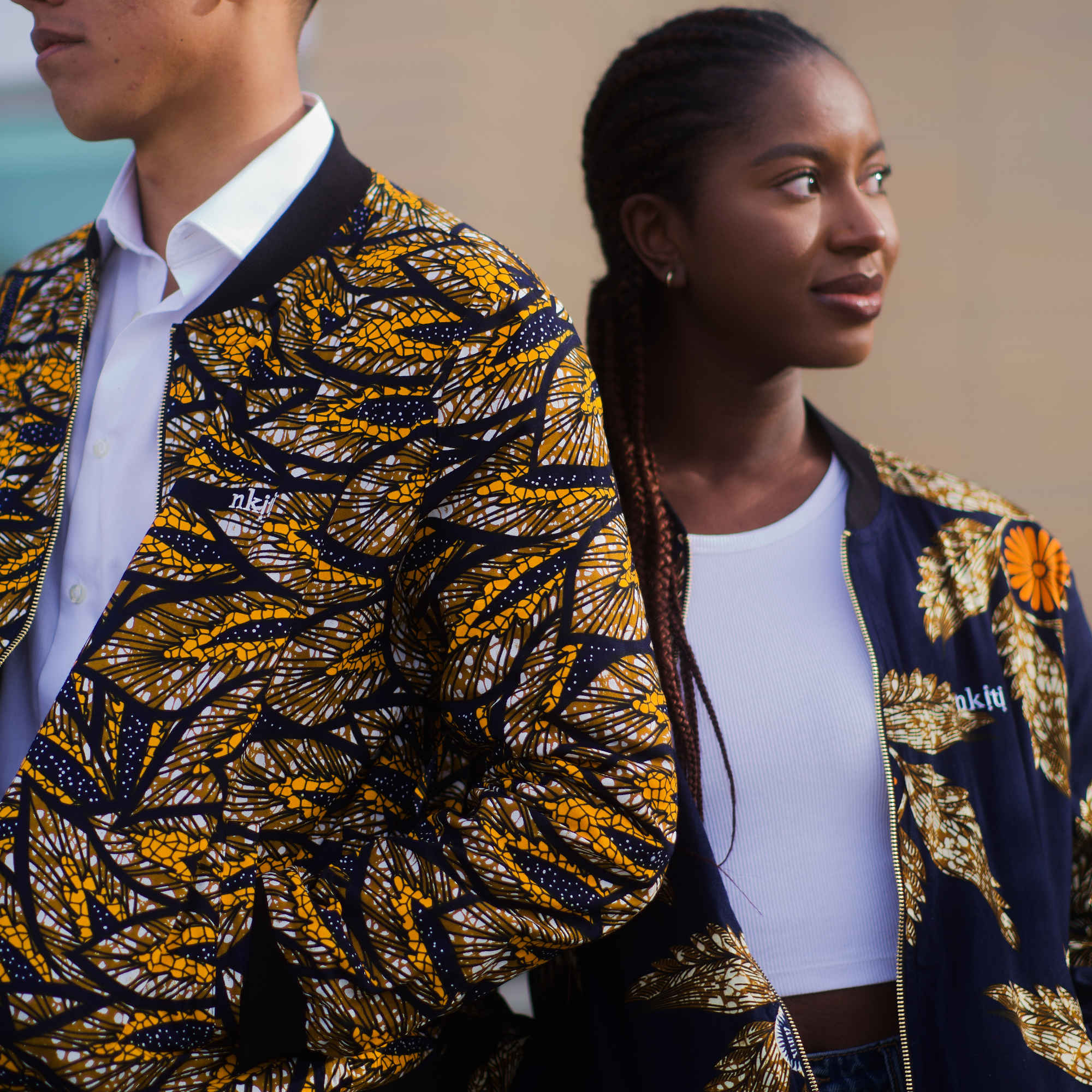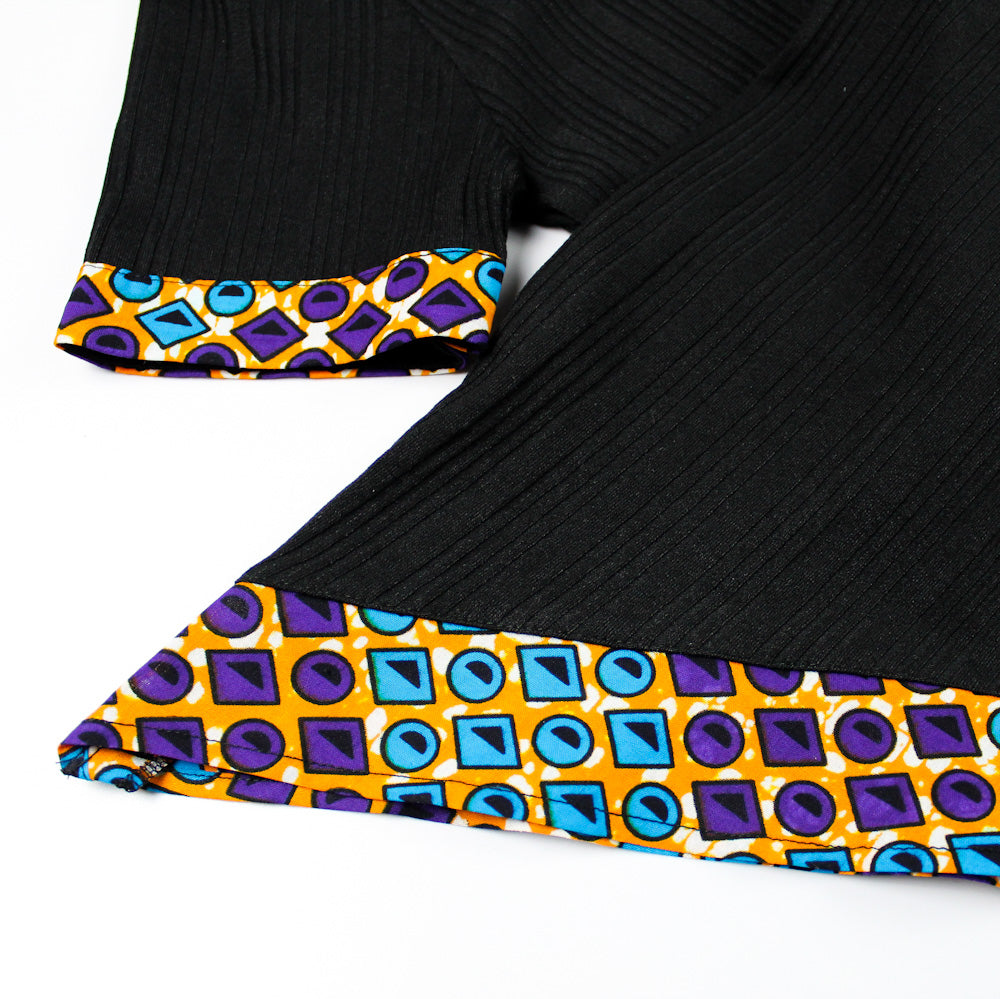
What makes Kente cloth so special?
Considered to be one of the most famous of all of African textiles, and notoriously one of the world’s most complicated weaves, Kente cloth (pronounced "KEN-TAY") is an emblem of national Ghanaian, ethnic and tribal pride.
If you’ve ever seen the distinctive, unique patterns and easily identifiable coloured cloth representing West African culture, then you’ve seen Kente cloth. It’s special on so many levels, not least because of its history.
Genuine Kente cloth is traditionally woven by Ashanti and Ewe weavers from Ghana, and today it can be found adorning everything from clothing to shoes, wraps to throws.
History of Kente cloth
While Kente cloth's origins are contested - it’s said to date back to the 12th century, and every tribe in Ghana has and wears their own unique design, claiming theirs was the first - the legend of the cloth’s creation remains the stuff of folklore.
According to Kente cloth tradition, the black weave represents Africa, the red represents the blood of the nation’s forefathers, the yellow represents gold and the green represents the fertile land. Of course there are other colours used too, but these are the traditional ones.
Made from silk and handwoven, Kente cloth used to be the preserve of royalty and important societal figures, and even then it was saved for only very special occasions. But today it’s much more readily available, making Kente cloth a cloth of the people. More commonly made from rayon, cotton and still silk (when possible), it’s a national cloth, representing all things Ghanaian.
Wearing Kente cloth
It isn’t just the cloth that is imbued with significance. To the person wearing the item of clothing, the pair of shoes, the wrap, it carries an even greater meaning. Each item of apparel tells its own story; it has its own anecdote, and represents its own set of values. Every hand woven piece of Kente cloth is a representation of a unique piece of history.
Every shape of the design, every colour of fabric, every pattern woven, has a specific meaning, bespoke to the creator. And these, when combined together into one piece of material, come together to tell a singular story.
Kente cloth carries even more significance for the Ghanaian and African diaspora - those people who carry their heritage close to their hearts, because they don't live in the motherland. One of the reasons Kente cloth is so popular around the world is because two people can wear the cloth, and without saying a word, they can communicate with one another.
For these people and their descendants, this brightly coloured, uniquely patterned cloth symbolises a unity with where they’re from. It’s amazing how a simple piece of cloth is capable of bringing people together, from all across the globe. Allowing them to remember their struggles, celebrate their ancestors, and share in national pride.
What other items of clothing do you know can do that?
Did Louis Vuitton misappropriate Kente cloth?
This symbol of African identity is instantly recognisable around the world, and so popular, so it shouldn’t come as a surprise that it was coveted by a major fashion house. You might have read about Louis Vuitton causing an uproar in their Autumn/Winter 2021 show.

During Paris Fall/Winter Louis Vuitton fashion show, global spotlight was put on kente again, with mixed reviews. The designer & artistic director behind the use of kente in the show is Virgil Abloh, who could not be easily accused of cultural appropriation due his Ghanian roots.
However, the fact that he represents a European fashion brand is obvious, whereas his Ghanian roots are not. So, at face value it looks like the brand is making the statement, not the creator.
The question is not about the source of inspiration, but who benefits from it and how that informs the perception of the kente print and all it represents.
Why the furore? As a brand with such a large following and one of the biggest fashion houses in the world, they should perhaps have been more proactive in giving credit to the Ghanaian culture despite the fact that their designer's ancestry is Ghanaian. Kente is a protected African cloth under local rules.
In this case, it is difficult to clearly state whether it is cultural appropriation or not as the answer may differ depending on if one is referring to the brand or the designer. Also, the fact that the fashion show notes indicates that the artistic director uses this part of the show to discuss reinvention and fluidity of cultures and identity, changes the tone of how we perceive this situation. As it adds a different understanding of why the kente print was used in this way.
Show notes stating:
“If Kente cloth—the fabric of Virgil Abloh’s cultural heritage—is rendered in tartan, does that make Kente any less Ghanaian and tartan any less Scottish? Provenance is reality, while ownership is myth: manmade [sic] inventions now ripe for reinvention.”
The answer is a nuanced as the situation is. At worst, it may be seen as cultural appropriation, at best, controversial. Either way, proactively paying homage to the heritage in which one draws inspiration from is key.
We explore this topic more in our "I'm white, can I wear African print?" blog article.
Kente cloth at Nkiti
Why are we at Nkiti in a position to write about Kente cloth? Because this magnificent material represents our collective history too.
We retail clothes that let people know what you stand for, and Kente cloth is one of the most iconic, traditional African clothing and we’re proud to be making it accessible to all.
When you buy Kente cloth through Nkiti, we guarantee you are buying quality Kente print fabric that you can be proud wearing, wherever you are, and wherever you're going.

If you want to find out more about Nkiti and our mission, Kente fabric or Ghanaian Kente cloth, get in touch with us today. Please contact us directly or visit our website for more information.






Leave a comment
This site is protected by hCaptcha and the hCaptcha Privacy Policy and Terms of Service apply.